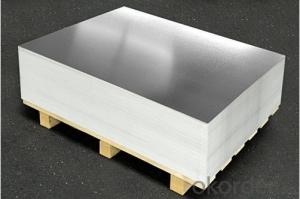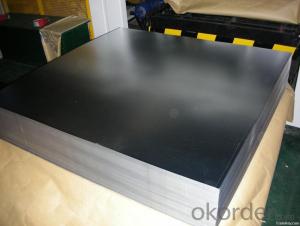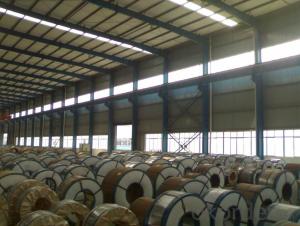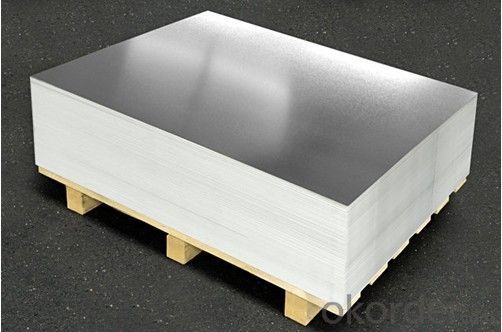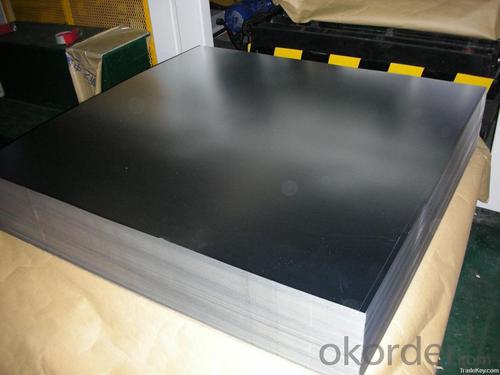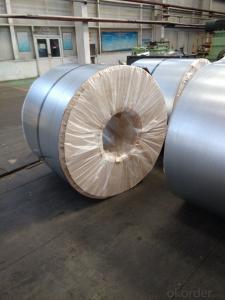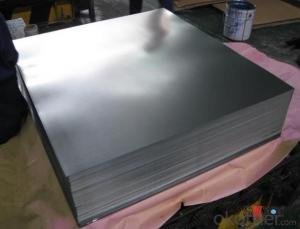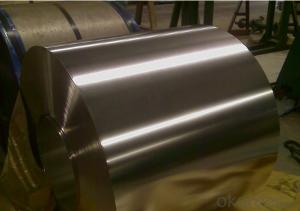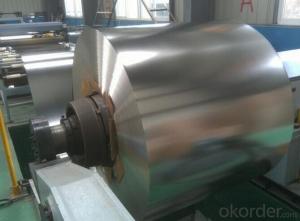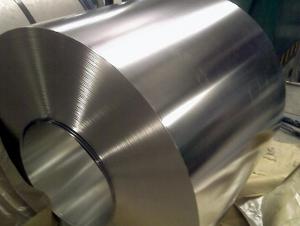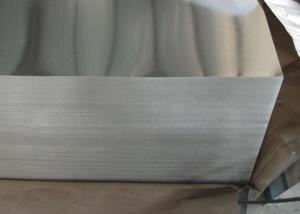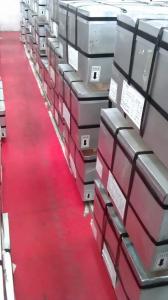Electrolytic Tin Plate for Foods Pakaging Making
- Loading Port:
- Tianjin
- Payment Terms:
- TT OR LC
- Min Order Qty:
- 25 m.t
- Supply Capability:
- 7000 m.t/month
OKorder Service Pledge
OKorder Financial Service
You Might Also Like
1.Structure of Electrolytic Tin Plate for Foods Pakaging Making Description
Tinplate is sheet steel covered with a thin layer of tin. Before the adventof cheap mild steel the backing metal was iron. While once more widely used, the primary use of tinplate now is themanufacture of tin cans. Tinplate is made by rolling the steel (or formerly iron) in a rolling mill, removing any scale(rust) by pickling it in acid and then coating it with a thin layer of tin.
2.Main Features of the Electrolytic Tin Plate for Foods Pakaging Making
Appearance – Electrolytic Tin Plate is characterized by its beautiful metallic luster. Products with various kinds of surface roughness are produced by selecting the surface finish of the substrate steel sheet.
Paintability and printability – Electrolytic Tin Plates have excellent paintability and printability. Printing is beautifully finished using various lacquers and inks.
Formability and strength – Electrolytic Tin Plates have got very good formability and strength. By selecting a proper temper grade, appropriate formability is obtained for different applications as well as the required strength after forming.
Corrosion resistance – Tinplate has got good corrosion resistance. By selecting a proper coating weight, appropriate corrosion resistance is obtained against container contents. Coated items should meet 24 hour 5 % salt spray requirement.
Solderability and weldability – Electrolytic Tin Plates can be joined both by soldering or welding. These properties of tinplate are used for making various types of cans.
Hygienic – Tin coating provides good and non toxic barrier properties to protect food products from impurities, bacteria, moisture, light and odours.
Safe – Tinplate being low weight and high strength makes food cans easy to ship and transport.
Eco friendly – Tinplate offers 100 % recyclability.
Tin is not good for low temperature applications since it changes structure and loses adhesion when exposed to temperatures below – 40 deg C.
3. Electrolytic Tin Plate for Foods Pakaging Making Images

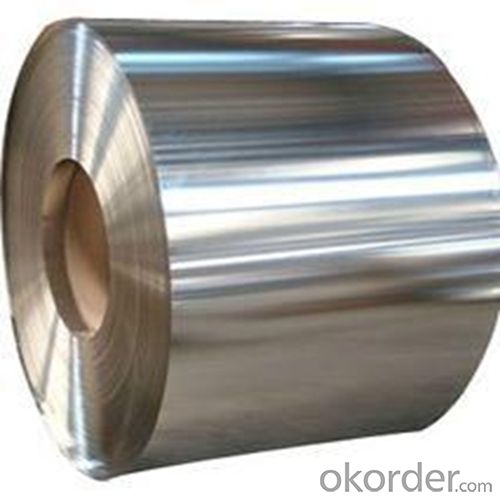
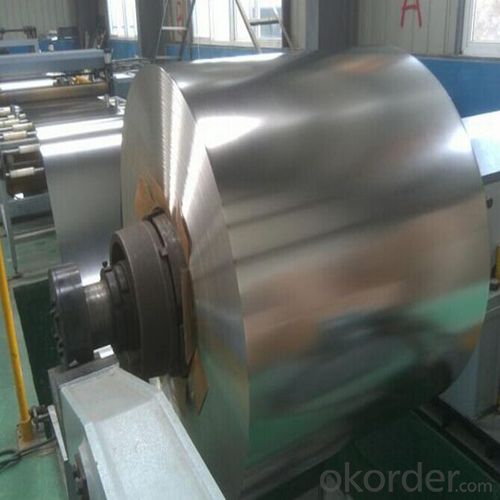
4. Electrolytic Tin Plate for Foods Pakaging Making Specification
Standard | ISO 11949 -1995, GB/T2520-2000,JIS G3303,ASTM A623, BS EN 10202
|
Material | MR,SPCC |
Thickness | 0.15mm - 0.50mm |
Width | 600mm -1150mm |
Temper | T1-T5 |
Annealing | BA & CA |
Coil Inner Diameter | 508mm |
Weight | 6-10 tons/coil 1~1.7 tons/sheets bundle |
Passivation | 311 |
Oil | DOS |
Surface | Finish,bright,stone,matte,silver |
5.FAQ of Electrolytic Tin Plate for Foods Pakaging Making
- How do you package the Electrolytic Tin Plates?
Wrapped completely with an inner cover of pastic or awaterprof papers with corners protected with metal angels on wooden pallets.
- How many types there are for base steels?
The base steels are of three types: Type MR, L, D
- Q: Can tinplate be used for microwaveable packaging?
- No, tinplate cannot be used for microwaveable packaging.
- Q: What are the main regulations governing tinplate production?
- The main regulations governing tinplate production include health and safety standards, environmental regulations, quality control measures, and labeling requirements. These regulations ensure that tinplate production processes are conducted safely, with minimal impact on the environment, and that the final product meets quality standards. Additionally, labeling requirements ensure that tinplate products are accurately labeled and provide necessary information to consumers.
- Q: What are the main innovations in tinplate manufacturing?
- One of the main innovations in tinplate manufacturing is the use of advanced coating technologies, such as electrolytic tin coating, which ensures a uniform and precise layer of tin on the steel substrate. This improves corrosion resistance and enhances the shelf life of the products packaged in tinplate. Additionally, advancements in printing techniques have allowed for high-quality and intricate designs to be directly applied to tinplate, making it more visually appealing and marketable. Furthermore, the development of lightweight tinplate materials has enabled manufacturers to reduce the overall weight of packaging, leading to cost savings and improved sustainability.
- Q: How does tinplate withstand corrosion?
- Tinplate withstands corrosion due to the thin layer of tin that is electroplated onto the surface of the steel. Tin is highly resistant to corrosion, providing a protective barrier that prevents the steel underneath from being exposed to moisture and oxygen, which are the main causes of corrosion.
- Q: Can tinplate be used for electrical enclosures?
- Yes, tinplate can be used for electrical enclosures. Tinplate is a type of steel sheet coated with a layer of tin, which provides corrosion resistance and durability. It can effectively protect electrical components from environmental factors, ensuring the safety and longevity of the enclosure.
- Q: How does tinplate impact the overall product design?
- Tinplate impacts the overall product design by providing a versatile and durable material that can be easily shaped and formed into various designs. Its corrosion resistance properties make it suitable for packaging applications, ensuring the product's integrity and prolonging its shelf life. Additionally, tinplate's aesthetic appeal and ability to be printed on enables creative branding opportunities, enhancing the product's visual appeal and marketability.
- Q: Can tinplate be used for packaging petrochemical products?
- Yes, tinplate can be used for packaging petrochemical products.
- Q: How does tinplate contribute to the preservation of paint products?
- Tinplate contributes to the preservation of paint products by providing a durable and protective packaging solution. It is a corrosion-resistant material that prevents the paint from coming into contact with oxygen, moisture, and other external factors that can lead to degradation or spoilage. Additionally, tinplate cans are known for their tight seals, preventing any leakage or contamination that could compromise the quality and longevity of the paint inside.
- Q: How is tinplate used in the automotive industry?
- Tinplate is commonly used in the automotive industry for manufacturing various components such as fuel tanks, oil filters, and battery casings due to its excellent corrosion resistance and ability to withstand high temperatures. It ensures durability and helps maintain the integrity of these parts, enhancing the overall performance and safety of vehicles.
- Q: What are the common testing methods for tinplate?
- Common testing methods for tinplate include visual inspection for surface defects such as scratches or dents, measurement of thickness using a micrometer or caliper, evaluation of coating adherence through tape or cross-hatch adhesion tests, assessment of corrosion resistance via salt spray or humidity tests, and determination of mechanical properties like tensile strength or elongation through tension tests.
Send your message to us
Electrolytic Tin Plate for Foods Pakaging Making
- Loading Port:
- Tianjin
- Payment Terms:
- TT OR LC
- Min Order Qty:
- 25 m.t
- Supply Capability:
- 7000 m.t/month
OKorder Service Pledge
OKorder Financial Service
Similar products
Hot products
Hot Searches
Related keywords

